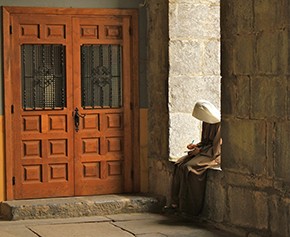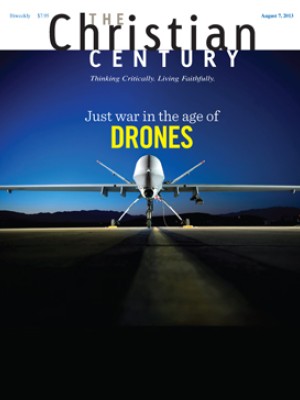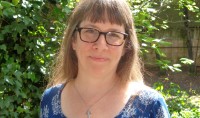Christian humanists
In June, the American Academy of Arts and Sciences reported to Congress on the fragile state of the humanities in our country. Only 7.6 percent of American college students majored in the humanities in 2010. Programs in humanistic fields, from world languages to the study of religion, are notoriously underfunded. And there is a growing cultural sense that in a difficult economy the humanities are mere luxuries. In November of last year, a Florida task force recommended that state universities charge higher tuition to students majoring in the humanities. Public money, Governor Rick Scott argued, should go to students working in fields that create jobs. Florida, he said, does not need “a lot more anthropologists.”
The report responds to this shortsighted thinking by arguing that the humanities nurture citizens who think and write clearly, bring imagination and critical acumen to bear on the world’s dilemmas, share a cultural literacy that can help bind our diverse society together, and cultivate thoughtful public discourse. The report recommends increased funding for research, the cultivation of master teachers, and the development of a “culture corps” that works with libraries, museums and other public spaces to help pass on humanistic expertise from generation to generation.
Read our latest issue or browse back issues.
The report doesn’t mention religious communities as potential sites for this work. But churches and other religious communities have long helped cultivate humanistic practices and the passing on of literary, linguistic and historical knowledge. We don’t often think of ourselves in this way, but I wonder what could happen if we did. The life of faith is shaped by humanistic practices—especially by practices of reading that generate new ideas, new texts, new ways of thinking and living.
Take the practice of lectio divina. My father reads through the psalms every month, six psalms a day, and writes one verse from each psalm in a notebook. When I was a child, I would occasionally read the six psalms to my dad, and we’d talk about which verse to write down. He taught me to listen for the verse that struck the deepest chord in me. The verse we chose on one day might be completely different from the one we chose when we encountered the same psalm a month or a year later. This kind of reading depends not only on aesthetic or theological preference, but also on the way a text intersects with one’s life and the life of the world. It teaches us to bring our reading and our living into dialogue. It is slow and repetitive and keeps us attentive to the many ways a text can reach us, the many meanings it can generate. It is the kind of reading practice that religious traditions cultivate.
My dad has filled notebook after notebook with verses from the psalms arranged in a variety of combinations, each page a new text with its own history. Those notebooks would have been called florilegia in the Middle Ages. In his seventh-century Liber scintillarum, Defensor of Ligugé collected sentences from the pages of scripture and the works of theologians like Jerome and Augustine. This Book of Sparklets (as Duncan Robertson translates the title in his wonderful book on lectio divina) is a collage of shining sentences arranged to speak in new ways.
A humanistic education cultivates not only the ability to absorb humanistic content, but also the capacity to hear the resonances between one text and another—or to combine disparate texts and ideas in such a way as to create new resonances. It is a capacity that Christians cultivate in practice of worship. We read portions of the Hebrew Bible alongside portions of the New Testament; we set down the needs of the world alongside the verses of a psalm; we lift up the prayer of one worshiper alongside the prayer of another. These texts reach us in the varied circumstances of our lives and, through the many ways they are combined in worship, help us to find new meaning in ancient words.
The American Academy of Arts and Sciences’ report urges us to reclaim our human inheritance by supporting the humanities and committing to literacy. We Christians can contribute to this project—after all, reading, critical thinking and creativity are part of our Christian inheritance. As we read, we can make sure that we listen for a verse that strikes a deep chord, collect the sentences that sparkle, and hold them up to each other’s light, letting each illuminate the other.
In To the Lighthouse, Virginia Woolf describes the gift of the artist as the capacity to “choose out the elements of things and place them together,” making of these bits and pieces “a globed compacted thing, over which thought lingers and love plays.” This is our work as Christians too. Congregations do this when they gather for worship. Preachers do it when they write a sermon. Is this practice shareable across the boundaries of religion? How might we contribute to the strengthening of these humanistic practices both in our faith communities and beyond?








